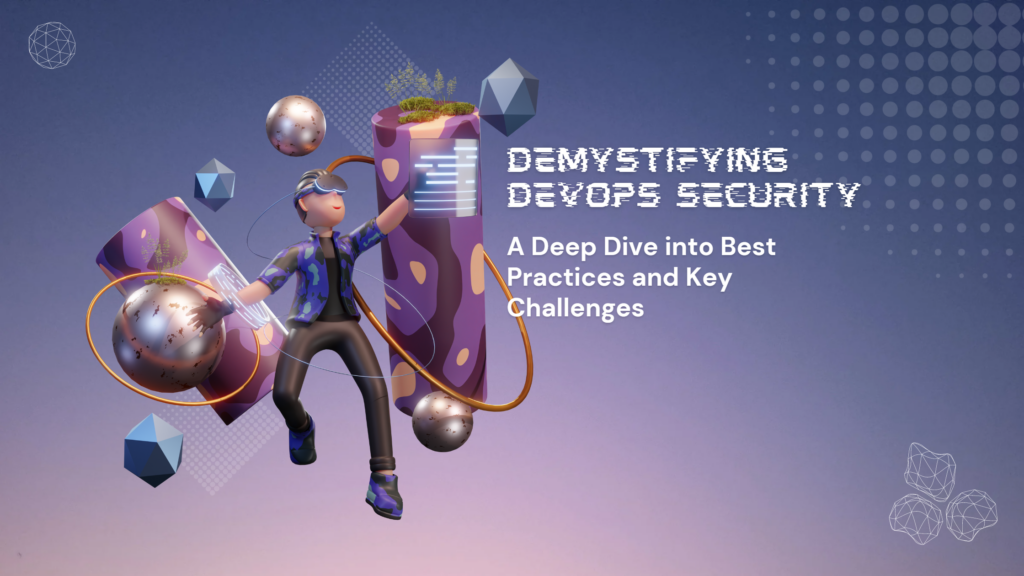I. What is DevOps Security?
DevOps security, commonly known as DevSecOps, refers to the practice of incorporating security protocols at every phase of the DevOps process. It converges development, operations, and security into a unified framework. In the age of frequent software deployments and high scalability requirements, applications often consist of numerous microservices and containers. While these factors offer business benefits, they also increase the complexity of application security. Therefore, the integration of security practices is crucial from the outset rather than being treated as an afterthought.
II. The Intersection of DevOps and Security
Traditionally, developers and operations teams have perceived security as an intrusion, often causing delays in the development process. The primary goal of these teams is to expedite software delivery, whereas the security team aims to mitigate potential security threats. This divergence often results in security considerations being pushed to the end of the cycle. However, integrating security protocols early in the process can substantially reduce technical debt, save time, and enhance the overall security of applications.
III. Cloud Security and DevOps
With the rapid adoption of cloud computing, securing DevOps processes has become even more challenging. Cloud environments present a larger attack surface and lack a well-defined network perimeter compared to traditional on-premises deployments. Minor misconfigurations or human errors can expose critical resources to public networks, disrupting the longstanding notion of network perimeter defense.
IV. The Risky Side of DevOps Tools
DevOps heavily relies on a suite of tools to automate the software delivery pipeline. Often, these tools, many of which are open-source, bring their own set of security concerns. Moreover, the complexity of configurations such as those needed for Kubernetes, necessitates a well-rounded strategy for implementing automatic security controls. These include understanding what is running in the environment (visibility), understanding the behavior of each element (observability), vulnerability scanning, and more.
V. The Impact of Weak Access Controls
Both human operators and computing tools require credentials such as passwords and API access tokens to gain access to sensitive resources in DevOps environments. Poorly managed secrets or weak access controls can expose these credentials, leading to potential disruption of operations, data theft, and unauthorized access to DevOps infrastructure.
VI. Embracing DevSecOps: The Road Ahead
To overcome the above challenges, it is essential to incorporate DevSecOps into the traditional DevOps model. This entails the adoption of key best practices:
Education and Collaboration: In a DevSecOps model, security teams educate developers about secure coding practices while also gaining insights into the nuances of the technology stack and coding practices. This two-way knowledge exchange fosters a culture of shared responsibility for security.
Penetration Testing and Automated Security Testing: These processes help identify vulnerabilities and provide remediation measures. While penetration tests offer value in the initial stages of the DevSecOps transition, automated security testing is crucial for a more integrated approach.
Establishing Security Policies: Consistently managing security risks requires clear policies on access control, configuration management, code reviews, and more.
Automation: Automating security processes is key to keeping pace with DevOps operations and identifying security flaws early in the process.
Vulnerability Management: This involves continual scanning, evaluation, and fixing of vulnerabilities throughout the software development lifecycle.
Privileged Access Management: Ensuring that access to sensitive resources is strictly controlled reduces the risk of supply chain attacks. This involves secure storage of privileged credentials and monitoring of privileged sessions for potential threats.
By understanding and adopting these practices, organizations can better manage and mitigate the security risks associated with the DevOps paradigm.
VII. Does DevOps Have Built-in Security?
While DevOps inherently aims for streamlined, efficient operations, security is not inherently built-in. However, the philosophy of DevSecOps attempts to embed security within the DevOps processes, making it an integral part of the development, deployment, and delivery lifecycle.
VIII. Why is Security Important in DevOps?
In the current digital landscape, security breaches can lead to substantial financial losses, damage brand reputation, and even jeopardize the continuity of businesses. With the rise of cloud services and microservices architecture, the attack surface for malicious entities has increased. Hence, security becomes paramount in DevOps to safeguard sensitive data, ensure the integrity of application processes, and maintain the trust of users and customers.
IX. The Role of DevOps in Cybersecurity
DevOps practices can greatly enhance an organization’s cybersecurity posture. By fostering a culture of shared responsibility for security and incorporating security protocols early in the development process, organizations can reduce the likelihood of vulnerabilities being exploited, accelerate the remediation of security issues, and ensure compliance with regulatory standards.
X. Is DevSecOps the Same as DevOps Security?
While the terms are often used interchangeably, they have nuanced differences. DevOps security often refers to the concept of integrating security into DevOps practices. On the other hand, DevSecOps represents an evolution of this concept where security considerations are not only integrated but are also treated as a shared responsibility across all team members, fostering a culture of proactive security practices.
XI. The Security Risks in DevOps
Several security risks are inherent in DevOps practices, including weak access controls, misconfigured cloud services, potential vulnerabilities in open-source tools, and the larger attack surface presented by microservices architecture. Addressing these risks requires a comprehensive, integrated approach to security, which is the core philosophy of DevSecOps.
In conclusion, the dynamic, fast-paced nature of DevOps necessitates a proactive approach to security. While challenges exist, adopting a DevSecOps model allows organizations to balance the need for speed and agility in software delivery with the critical importance of security. It represents a shift towards a culture of shared responsibility for security, transforming it from a stumbling block to an integral part of the software development process.
